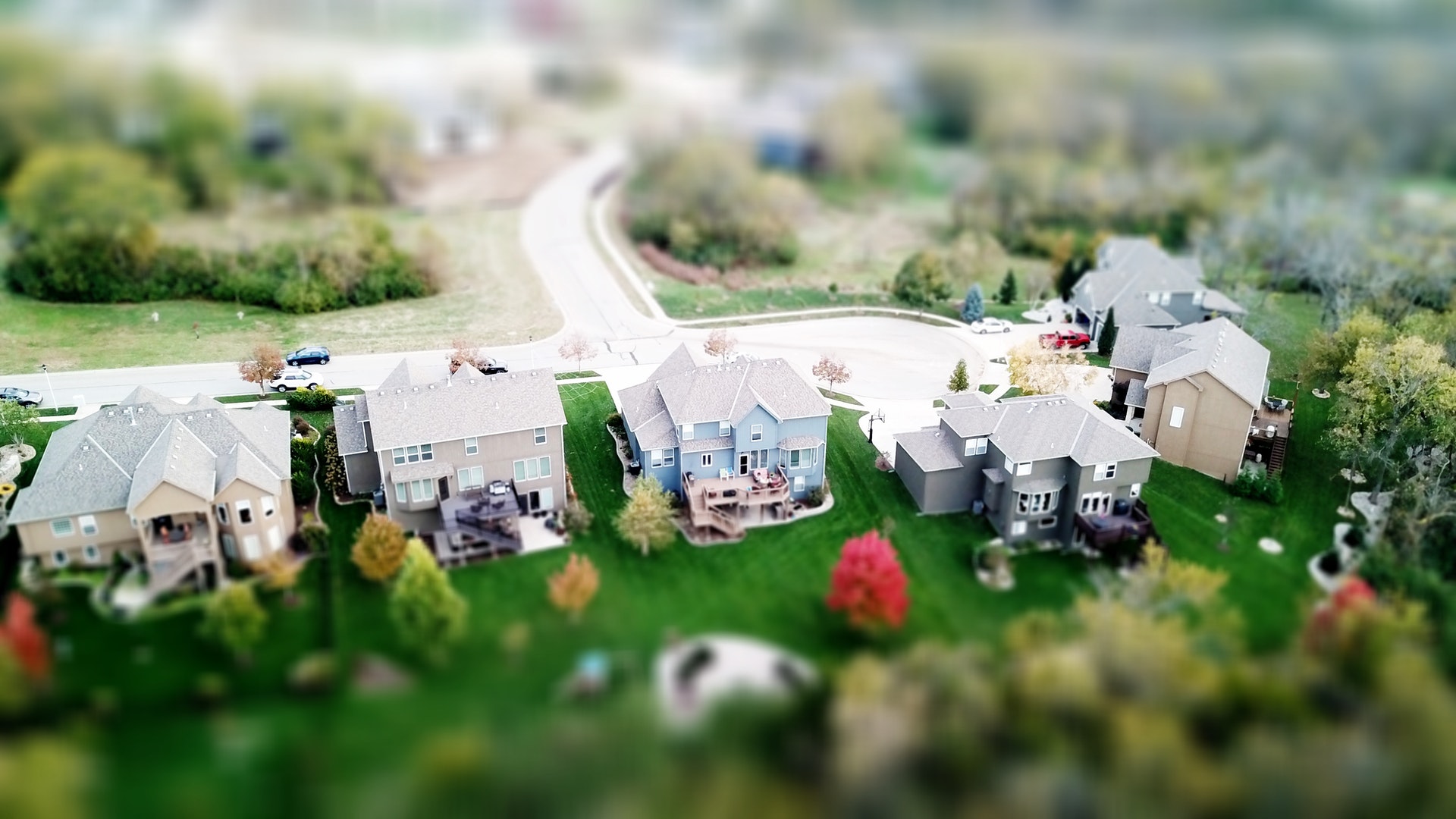The world of real estate is always changing. What consumers want and can afford shifts on a constant basis. The pace of development plays a role as well, impacting what’s available on the market.
Keeping pace with real estate is never easy. But, with a bit of time and research, it’s possible. To help you stay on top of the market, here are 24 real estate statistics you should know.
1. There are 1.4 Million Realtors
The terms “real estate agent” and “realtor” aren’t interchangeable. While anyone who sells real estate doesn’t have to be a member of the National Association of Realtors (NAR), they do if they want to call themselves a “realtor.” As of 2019, 1.4 million people decided they wanted the realtor title, officially becoming members or maintaining their membership.
(Source: Statista)
2. About One-in-Five Commercial Drone Shoots Are for Real Estate
Aerial photography can be a great way to make a property stand out. And what does that better than a drone? Real estate is one of the top five markets for small unmanned aircraft systems (sUAS) – also known as drones – coming in second. The only industry outpacing real estate is industrial inspection, which has a whopping 42 percent of the market.
(Source: Federal Aviation Administration)
3. The Internet Reigns Supreme for Launching House Searches
When aspiring homeowners want to find a property, 44 percent actually head online to scout out properties before taking any other step. While 87 percent still work with a real estate agent or realtor, only 17 percent of buyers decided to contact one as a first step.
(Source: National Association of Realtors)
4. In 2019, Over 6 Million Homes Got New Owners
Over the course of the year, 5.34 million existing homes were sold in the United States. Plus, there were 682,000 new construction properties, bringing the total over the 6 million mark.
(Source: National Association of Realtors)
5. There Are More Than 284k Brokerage Firms in the Country
In the United States, there are 284,029 firms operating in the real estate space. That figure doesn’t include rental or lease-only establishments, though it could include brokerages or agents that tap into those sectors as well as sales.
(Source: US Census Bureau)
6. Median Homeownership with a Mortgage Costs Outdo Rents
When there’s a mortgage involved, the median cost of owning a property comes in at $1,558 per month. Compare that to the $1,023 for renters, and it seems like the latter is getting a deal. But, once the mortgage is out of the equation, the tables turn. Owners only have to deal with $490 a month, making homeownership the bargain.
(Source: US Census Bureau)
7. There Are Over 139 million Housing Units in the United States
As of 2019, there were an estimated 139.64 million housing units across the country. This includes everything from single-family homes to apartments.
(Source: Statista)
8. Building Permits Cross the 1.3 Million Mark
In 2019, there were approximately 1.39 million building permits issued. That figure includes new construction as well as improvements, repairs, or alterations to existing properties.
(Source: US Census Bureau)
9. There’s Over 87 Billion Square Feet of Commercial Building Space
In the United States, there are approximately 5.6 million commercial buildings. Together, they represent about 87.4 billion square feet in floor space.
(Source: Commercial Buildings Energy Consumption Survey)
10. The Homeownership Rate is 65.3 Percent
Homeowners are the majority in the United States by a decent margin. The current homeownership rate is 65.3 percent.
(Source: US Census Bureau)
11. 37 Percent of Homes Are Mortgage-Free
More than one-third of homes aren’t tied to a mortgage. Instead, they are owned outright.
Older generations tend to be ahead when it comes to being mortgage-free. Of those 70 and older, 68 percent aren’t dealing with a mortgage. While 41 percent of Baby Boomer homeowners aren’t having to worry about the expense, either, only 15.9 percent of Millennials can say the same.
(Source: Forbes)
12. Residential Home Values Total in the Trillions
Cumulatively, the value of the United States residential home market is approximately $33.6 trillion. That’s a $11.3 trillion increase since 2010.
(Source: Zillow)
13. Many Homebuyers Have Post-Purchase Regrets
While being a homeowner might be part of the American dream, not everyone is happy that they reached the goal. An estimated 44 percent of all homeowners (and 63 percent of Millennial buyers) admitted that they had some regrets about their purchase.
Unexpected maintenance and other hidden costs topped the reasons given. However, the size of the house, the home’s location, and the terms of the mortgage also factored in for some buyers.
(Source: Bankrate)
14. The White House is Worth an Estimated $419 Million
While it’s hard to put a price on something as historically and functionally significant as the White House, many have tried. With 132 rooms (35 of which are bathrooms), the over 200-year-old structure is valued at more than $419 million.
(Souce: Zillow)
15. More Than One-Third of Homeowners Are Under 35
Just a bit more than one-third (35 percent) of all United States homeowners are under the age of 35. The majority of them are Millennials, though some are members of Gen Z, the youngest group to join the workforce.
(Source: US Census Bureau)
16. The Price of Luxury Homes Fell By 1.6 Percent in Q1 2019
Between 2018 and 2019, the price of luxury homes dipped nationally. The average decline was 1.6 percent. The number of $2+ million dollar home sales also tumbled by 16 percent, representing the biggest year-over-year decline since 2010.
(Source: Redfin)
17. Median Home Sale Price Sits Above $280k
As of April 2020, the median home sale price sat at $286,800.
(Source: National Association of Realtors)
18. Thursday is the Best Day to List a New Property
Sometimes, timing is everything. Data shows that listing a property on Thursday can actually lead to a higher sale price. On average, offers came in more than $3,000 higher on Thursday listings than Monday listings. Second place went to Wednesday listings, while Friday listings took third.
(Source: Redfin)
19. Staging Leads to Faster Home Sales and Higher Prices
On average, staged homes sell 88 percent faster than their unstaged counterparts. Plus, they tend to sell for 20 percent more, which can offset the cost of using a staging service.
Since staging helps prospective buyers visualize how they can use a space and give them perspective on the size of the rooms, it can make a property more appealing when compared to an empty one.
(Source: Realtor.com)
20. The Midwest Has the Most Homeowners
When it comes to homeownership rates, the Midwest is the winner, with 68 percent of the people in that area living in their own homes. The South comes in second, sitting at 66.2 percent.
Comparatively speaking, home prices tend to be lower in those regions. That could make ownership more accessible or, at least, make it appear like a better deal than renting.
(Source: US Census Bureau)
21. San Jose Has the Highest Share of Million-Dollar Homes
With a total of nearly 370,000 housing units, 208,745 of which are valued at or above the $1 million threshold, San Jose has the highest share of million-dollar homes, coming in at about 56 percent.
San Francisco is second, sitting at around 42 percent, while Los Angeles was third with close to 19 percent. After L.A. are San Diego (14 percent) and Seattle (11 percent), the only city outside of California to fall in the top five.
(Source: Lendingtree)
22. Detroit Has the Most Homes Valued Below $100k
When it comes to inexpensive real estate, Detroit is head and shoulders above the rest. The median home value is near $43,000. Plus, 85 percent of the homes have values below the $100,000 mark.
(Source: CNBC)
23. Hawaii Has the Lowest Property Tax Rate
Many are surprised to learn that Hawaii has some of the lowest property tax rates around. Its effective real estate tax rate is a measly 0.27 percent, causing a $205,000 home to only rack up $560 in taxes.
Alabama comes in second with an effective rate of 0.42 percent. Colorado is third, sitting at 0.53 percent.
(Source: Wallethub)
24. While New Jersey Has the Highest Property Taxes
On the higher end of the spectrum sits New Jersey. There, the effective property tax rate is 2.47 percent, causing a $205,000 home to end up with a $5,064 tax bill. Second place Illinois isn’t much better, with 2.30 percent rate. New Hampshire is third, sitting at 2.20 percent.
(Source: Wallethub)
Bottom Line
Ultimately, the real estate market is complex, constantly shifting and adjusting as events occur and conditions shift. Plus, the national landscape is incredibly diverse, which in and of itself is intriguing.
The statistics above showcase some of the unique aspects of the United States real estate market, including buyer attitudes, seller strategies, value estimates, and more. Plus, it covers some quirky pieces of information, demonstrating that an industry as old as real estate can still be a bit surprising.



